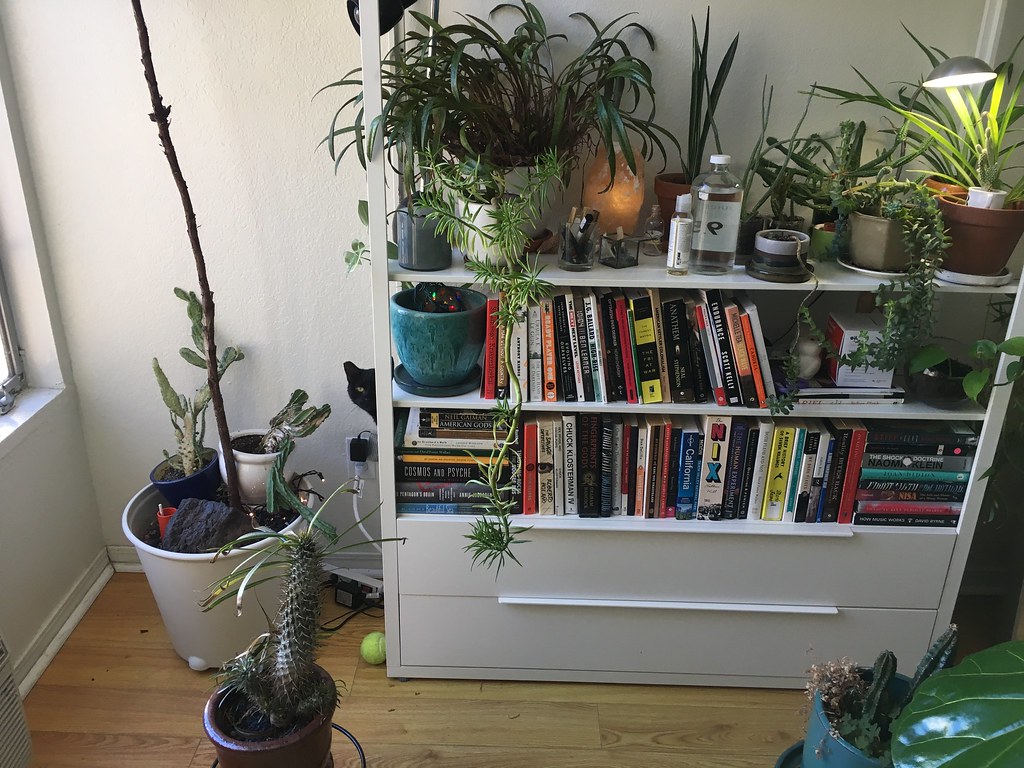While Iowa harbors a great variety of plant life, there are some beautiful plants that just can’t take the cold winters. But that doesn’t mean you can’t grow them for years on end. Bring them inside for the winter! Here we have some tips for overwintering your plants and for general indoor house plant care.
Overwintering
Just because a plant can’t tolerate Iowa winters, doesn’t mean it can’t handle cold temperatures. These plants may not need to come into your home, but just need shelter and protection from the harshest of conditions. Remember, plant hardiness ratings are for the average maximum and minimum temperatures.
There are two ways to winter your plants that can’t survive in the ground; above-ground burial and indoor sheltering.
Outdoor overwintering
For the first method, move all the plants you plan to keep outside into the same area sheltered from the wind, then insulate and cover them.
Give them a good soak before temperatures drop below freezing, then stuff the space between them with mulch, straw, and other insulating material before covering the top with evergreen boughs and a thermal blanket.
Indoor Overwintering
For most potted plants, moving them indoors is the best way to keep them healthy over the winter. There are two main factors to consider when overwintering plants in your home; light and water.
Light
Flowering plants need more light than foliage plants. Place them near windows on the south, east or west side of your home, but not right up against them. In winter months, the air right by the window may be too cold for your plants. Give them 4-6 inches of space from their nearest leaves to the window.
Foliage plants can usually be kept by north-facing windows or in a room that receives sunlight during the day, even if no direct sunlight to the plant is possible. Once again, be careful not to place them too close to the window because of the cold air.
Once you’ve determined a place for your plants, try not to move them too much, as they acclimate to the area they are in. Sudden changes in the amount of sunlight they receive can burn or wilt leaves.
Watering
Watering indoors can be a little trickier than outdoors. To start, keep your pots in trays to catch excess water. These trays should really only catch excess water, so you’ll know you’re watering too much if your plants are sitting in water in their trays.
You can gauge when your plant needs water by the look and feel of the soil. When the topsoil is lighter in color, use your finger to feel just beneath the surface to check if it’s dry or has some moisture. If it feels more dry than moist, water your plant slowly until you see water seep out the bottom of the pot.
Sometimes the drainage holes can clog in a pot, so occasionally clear them with your fingers or a small tool to ensure they are draining correctly.
Humidity
Plants love damp air, and the air indoors can be very dry during the winter. You can help your plants out by misting them once a day or keeping them in places that naturally increase in humidity from time to time such as bathrooms and kitchens.
Another strategy is to keep your plants sitting on top of wet sand or gravel. The water in a tray of wet sand/gravel will evaporate throughout the day and the moisture will disperse in the air around your plant.
Other Tips
If you have house cats, they may take a liking to your overwinter plants. Either for feeding or they may try to pee in bigger pots.
To keep them from feasting on plants, keep a water bottle nearby to spray them if/when they try and eat the leaves or grasses of your plants. Or, elevate the plants onto pedestals or ledges where cats can’t easily get to them.
Cats often mistake the large soiled pots of some plants for litter boxes, but this can be prevented by placing tin foil over the soil. Cats dislike the feel of tinfoil on their feet and will be less likely to attempt to use the potted plant as a litter box.

